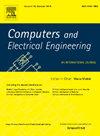AI-enabled Computational Intelligence Approach to Neurodevelopmental Disorders Detection Using rs-fMRI Data
IF 4.9
3区 计算机科学
Q1 COMPUTER SCIENCE, HARDWARE & ARCHITECTURE
引用次数: 0
Abstract
Neurodevelopmental disorders (NDDs), including ADHD and ASD, profoundly impact children and adolescents. Leveraging Machine Learning (ML), Deep Learning (DeepL) on Functional magnetic resonance imaging (fMRI) data offers enhanced insights, advancing the understanding and diagnostic capabilities of NDDs. Traditionally, researchers extract time series data from predefined brain regions (ROIs) using atlas-based methods and focus on generating brain functional connectivity using Pearson correlation by analyzing changes in signal amplitude over time. This conventional approach assumes that the brain’s structure can be modeled in a simple Euclidean space and predicted with conventional ML/DeepL techniques. However, these traditional methods have several drawbacks. Predefined ROI extraction fails to capture the inherent variability in brain connectivity patterns across individuals, potentially missing crucial information, while relying on Pearson correlation to analyze functional brain connectivity is sensitive to amplitude fluctuations caused by high neural oscillations, leading to inaccurate representations of true neural relationships. Modeling brain functional structure in Euclidean space does not account for the brain’s complex, non-linear neural dynamics, limiting the effectiveness of ML/DeepL models. To address these issues, we propose: 1) An approach that adapts ROIs for each subject using combined grouped Independent Component Analysis (ICA) and Dictionary Learning (DL), better representing individual brain topologies; 2) The application of Phase Locking Value (PLV) to estimate functional connectivity in the frequency domain, reducing sensitivity to amplitude variations while effectively capturing both linear and non-linear signal relationships; 3) The implementation of a Graph Convolutional Network (GCN) to address the brain’s non-Euclidean topological structure with graph architecture, enhancing the classification and diagnosis of neural disorders. This method was tested on the ADHD-200 dataset for ADHD and the ABIDE-I dataset for ASD, achieving high accuracy (94% ±1.3% for ADHD and 89.3% ±2.3% for ASD) through 10-fold cross-validation. The integration of data-driven ROI extraction, frequency-domain connectivity analysis, and non-Euclidean graph-based brain architecture representation collectively represents a novel approach to improving the understanding and prediction of NDDs.
利用rs-fMRI数据检测神经发育障碍的ai计算智能方法
神经发育障碍(ndd),包括ADHD和ASD,对儿童和青少年有着深远的影响。利用机器学习(ML),深度学习(DeepL)对功能磁共振成像(fMRI)数据提供了增强的洞察力,提高了对ndd的理解和诊断能力。传统上,研究人员使用基于地图集的方法从预定义的脑区域(roi)中提取时间序列数据,并通过分析信号幅度随时间的变化,利用Pearson相关性来生成脑功能连通性。这种传统的方法假设大脑的结构可以在简单的欧几里得空间中建模,并用传统的ML/DeepL技术进行预测。然而,这些传统的方法有一些缺点。预定义的ROI提取无法捕捉个体之间大脑连接模式的内在变异性,可能会遗漏关键信息,而依赖Pearson相关性来分析功能性大脑连接对高神经振荡引起的幅度波动很敏感,导致对真实神经关系的不准确表示。在欧几里得空间中对大脑功能结构进行建模不能考虑大脑复杂的非线性神经动力学,从而限制了ML/DeepL模型的有效性。为了解决这些问题,我们提出:1)使用组合独立成分分析(ICA)和字典学习(DL)来适应每个主题的roi的方法,更好地代表个体大脑拓扑;2)应用锁相值(PLV)估计频域的功能连通性,降低对幅度变化的敏感性,同时有效捕获线性和非线性信号关系;3)实现了一种图卷积网络(GCN),利用图架构来解决大脑的非欧几里得拓扑结构,增强了神经系统疾病的分类和诊断。该方法在ADHD的ADHD-200数据集和ASD的ABIDE-I数据集上进行了测试,通过10倍交叉验证,获得了较高的准确率(ADHD为94%±1.3%,ASD为89.3%±2.3%)。数据驱动的ROI提取、频域连通性分析和基于非欧氏图的脑结构表示的集成共同代表了一种改进ndd理解和预测的新方法。
本文章由计算机程序翻译,如有差异,请以英文原文为准。
求助全文
约1分钟内获得全文
求助全文
来源期刊

Computers & Electrical Engineering
工程技术-工程:电子与电气
CiteScore
9.20
自引率
7.00%
发文量
661
审稿时长
47 days
期刊介绍:
The impact of computers has nowhere been more revolutionary than in electrical engineering. The design, analysis, and operation of electrical and electronic systems are now dominated by computers, a transformation that has been motivated by the natural ease of interface between computers and electrical systems, and the promise of spectacular improvements in speed and efficiency.
Published since 1973, Computers & Electrical Engineering provides rapid publication of topical research into the integration of computer technology and computational techniques with electrical and electronic systems. The journal publishes papers featuring novel implementations of computers and computational techniques in areas like signal and image processing, high-performance computing, parallel processing, and communications. Special attention will be paid to papers describing innovative architectures, algorithms, and software tools.
 求助内容:
求助内容: 应助结果提醒方式:
应助结果提醒方式:


